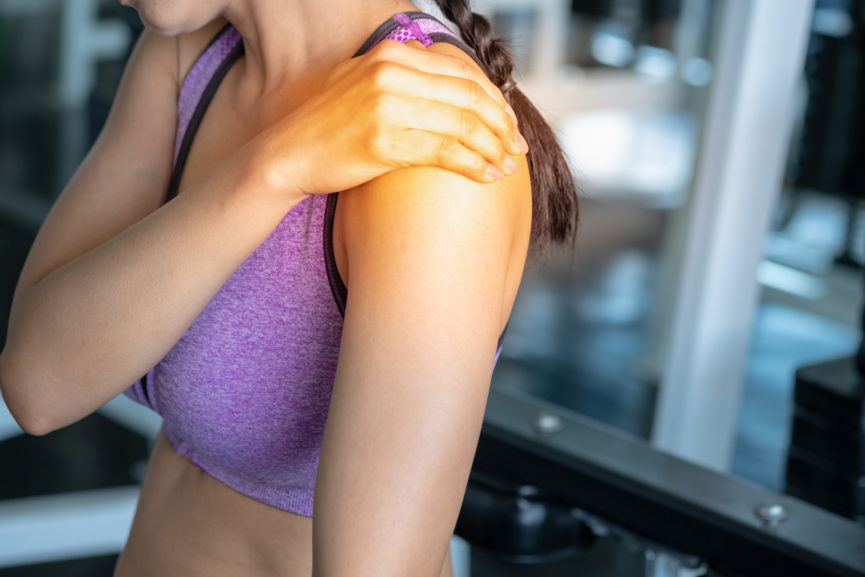Congratulations! You have endured one of the most common procedures known to modern wear and tear: the rotator cuff surgery. Now, how are you going to recover?
With so many options, it might not be clear what to do. From old-school, blood, sweat, and tears rehab to state-of-the-art biomedicine, you should be aware of what’s out there.
Rotator cuff surgery is nothing to scoff at. That’s why you need to be prepared for the aftermath: your rotator cuff surgery recovery period. We’re here to help.
Rotator Cuff Repairs. What’s the Difference?
If you want to understand how to recover from a rotator cuff surgery, it’s best to understand the different types of procedures involved.
If the tear is a large, complex, or complete tear, rotator cuff recovery time is going to be much longer. The reason is, the incision must be quite large–anywhere from 2-3 inches.
Why the need for such a large incision?
The rotator cuff is a tendinous cuff surrounding your super-mobile glenohumeral joint, which is a fancy way of saying your shoulder joint.
The rotator cuff sits deep in the shoulder, and surgeons have to bypass larger muscles, specifically the deltoid, to access it. Hence the need for a larger, more traditional incision.
Rotator cuff tears often result from bone spurs on the underside of the acromion process–that little area of shoulderblade that sits at the top of the shoulder.
Part of the rotator cuff passes just under the acromion, and if bone spurs grow on its underside, the tendon can scrape against the spurs when you move and cause damage.
Removing the bone spurs, a process known as acromioplasty is critical to preventing re-injury. Surgeons will sometimes perform an acromioplasty in addition to the tendon repair.
The mini-open repair is a procedure that requires a smaller incision, usually 2-3 inches. Surgeons will often use arthroscopes (tiny surgical cameras) to see inside since they don’t have to maneuver around large muscles.
With the help of the arthroscope, a surgeon can make a rotator cuff repair without creating a large incision. A surgeon will generally make a smaller incision–often 3 centimeters or smaller–to fit the scope and other surgical instruments.
All-in-all arthroscopic surgery creates the least amount of scar tissue of all the types of surgery.
Rotator Cuff Surgery Recovery
What does all of this mean for rotator cuff surgery aftercare? As you might imagine, the larger the incision, the longer the recovery time.
Regardless of the type of surgery, there’s one thing you always want to address first: swelling.
The rotator cuff post-surgery can get swollen and stay that way for some time. Often the first steps any physical therapist will take are to manage the swelling.
A therapist may use a variety of techniques, from cold therapy to gentle range of motion techniques to manual lymphatic techniques that physically push the fluids out of the area.
After the swelling management, then comes the assisted range of motion techniques followed eventually by unassisted techniques. Ultimately, the patient will progress to exercises to rebuild strength in the damaged, often weak, muscles.
All-in-all, rotator cuff recovery can take anywhere from 4 weeks to several months.
But what if there was a way to speed up recovery using one of the smartest, safest biomedical treatments around?
PRP Therapy
One of the most exciting developments in rehab medicine in the past twenty years has been platelet-rich protein therapy, also known as PRP.
Your blood contains an elixir ripe with massive healing and rejuvenating powers: plasma. Plasma is the relatively liquid aspect of your blood, distinct from your red blood cells.
As doctors discovered not long ago, your blood’s plasma contains important natural compounds your body uses to repair injuries. Clotting factors in your plasma help you create scar tissue to stop bleeding and further damage. Specialized proteins and growth hormones within platelets help damaged cells regenerate.
The best part of PRP therapy? The doctor uses your own blood’s plasma to reinject into injury sites. The result is a quantum leap in the time it takes to make a full recovery.
If you have been seeking alternatives to invasive surgery for a rotator cuff injury, give PRP therapy a try. Our experienced clinical professionals will take your blood, spin it through a centrifuge to separate the plasma from the red blood cells, then safely reinject your platelets into your injury site–
no harsh chemicals or potentially addictive medications. The procedure takes all of 30 minutes.
PRP for Rotator Cuff Recovery
Most people understand PRP therapy as an alternative to surgery. Did you know you can use PRP therapy to assist with post-surgical recovery as well?
After surgery, physical therapy and rehab are essential, especially after a rotator cuff procedure. However, PRP can augment your treatment by decreasing pain and assisting with tissue repair, ultimately shortening your rotator cuff recovery time.
The reason? Surgery is like a massive injury, except the idea is that you’ll benefit in the end. Nevertheless, surgical incisions are just as much of an insult to your body as any other cut or laceration. And your body reacts in kind: with inflammation, spasm, then, ultimately, scarring.
With PRP therapy, it’s not uncommon for patients to experience improvement in their condition within a matter of weeks. If you are preventing surgery, PRP can mean you never have to undergo an invasive procedure. If you are recovering from something like a rotator cuff surgery, a series of PRP injections can shave weeks off your recovery.
Best of all, PRP has been validated time and again through MRI scans. Also, it is safe, drug-free, and takes just minutes to complete.
Experience the Power of a PRP Therapy
Rotator cuff surgery is a serious undertaking. If you are looking for a drug-free way to speed up the recovery process, it’s time to give PRP therapy a try!
Contact us today. Our physician-led staff is ready to help you explore your options.

